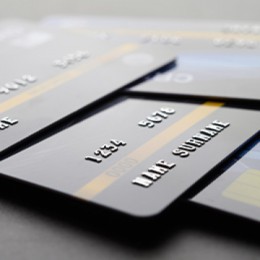
‘Recipe’ For Good Credit
Oftentimes, when people see or hear ‘credit’ or ‘credit score’ they think of credit as a complicated and complex subject. In ways it is, but we’re here to help break down credit into a simple recipe to make it easier for you to build and maintain a good credit score!
Though there are many parts to a credit score, the key ingredients are:
- Payment History: Pay your bills on time.
- Capacity: The total amount of available, revolving credit (i.e., your credit cards or lines of credit). Don’t use up all of your available credit; a good rule of thumb is to keep capacity at 30% or less.
- Observe: Keep an eye on everything else.
This recipe will help you with two of the biggest factors that influence your score: payment history and credit utilization (how much of your available credit limit you use).
Paying your bills on time.
This seems like a simple thing to do, but for some, it can be quite difficult because of a budget crunch, forgetfulness or disorganization.
Using simple ways to pay your bills on time is crucial to keeping or improving your credit score. Consider automatic payments, automatic transfers, scheduling bill payments, setting reminders, or other ways that you keep up with the rest of your busy life.
Using 30% or less of your capacity.
Just because you have credit available within a credit card’s limit, does not mean you should use it all. Consider only using your credit card(s) if you know you can pay off the balance, or tell yourself you’re only allowed to charge a specific amount and not go over that until it’s paid off. It’s always best to keep overall credit card debt and balances to 30% or less of your total credit limit.
Observing everything else.
Get a taste of the other ingredients that make up your credit score and make sure you’re keeping up with them. These other ingredients include:
- Types of credit you have
- How frequently you apply for credit
- The length of your overall credit history
Types of credit. It’s good to have a mix of both installment and revolving credit. Examples of installment credit are personal loans and auto loans. While an example of revolving credit is a credit card.
New credit. It’s not always the right move to apply for credit, whether that be a new credit or store card, or a new loan. The more often that you apply for credit, the more ‘dings’ you’ll put on your credit score. Too many inquiries into a credit report will start to negatively impact your score.
Average age of your credit accounts. Your credit score is created the first time you open a credit card or take out a loan. If you’re new to the credit world, it will take a little bit of time to start developing your score. A credit report looks at your entire credit profile starting with the first tradeline that you’ve opened. The longer the sample size of credit you have, the more information a report has to determine your credit profile and score.
It’s a good idea to check your credit reports regularly for errors and dispute them if you find any. Remember, your credit score is kind of like baking a cheesecake. If you forget to add even just one ingredient, it just won’t be as good when you are ready to consume it. In the end, we hope this simple recipe helps you on your way to good credit.











0 comments